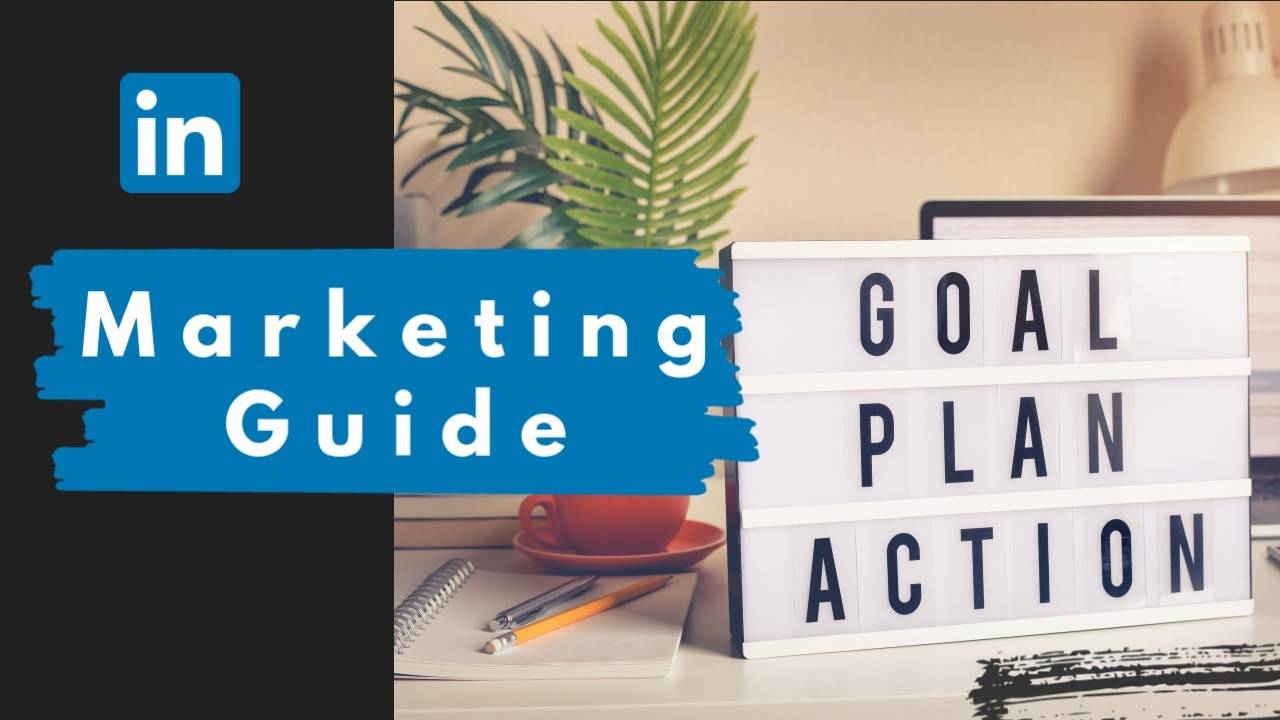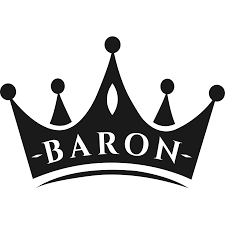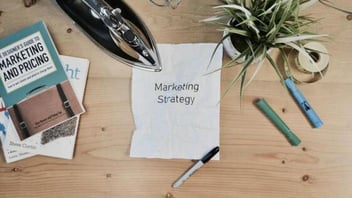
The 2021 LinkedIn Marketing Guide
LinkedIn makes up more than 50% of social media traffic to B2B websites. It’s also the number one content marketing platform used by B2B marketers.
That’s no surprise considering that it’s hailed as the number one social media platform for professionals.
There’s a lot to be leveraged from LinkedIn if you know how to put together a winning strategy. Managing social media takes up a lot of time, and having an inactive account can make your business look unprofessional.
So, if you’re going to get the most from LinkedIn, you’ll need to do more than create an account and hope for the best. This guide outlines everything you need to know to create or improve your LinkedIn marketing for 2020.
LinkedIn Basics
Here’s another fun fact for you: Of its 675 million members, 61 million of them are senior-level influencers. These are the type of people we find on LinkedIn, which is the first thing to understand about using it as a marketing channel.
Being so full of business professionals, LinkedIn users tend to be actively seeking out valuable information for their business. This positions LinkedIn quite differently to other social media platforms because its users are already receptive to marketing content.
It also makes it a gold mine for B2B marketing, so if this is your area, LinkedIn is a must.
What Works Best on LinkedIn?
In the long run, what works best for your marketing strategy on LinkedIn is going to come down to your business, your customers, and the content you create, but there are some starting points worth noting.
Remember that LinkedIn has a very specific user demographic of business professionals. They are not looking for the latest celeb gossip or funny meme. They are looking for useful, inspiring content to help them grow their business and skills.
LinkedIn is all about networking. It’s not about how many connections you have, but how many valuable relationships you can create.
Types of Accounts
There are five types of LinkedIn accounts that you can choose from:
- Basic – the free option
- Job Seeker
- Business Plus
- Sales Navigator
- Recruiter Life
The free account will give you basic functionality within LinkedIn, which might be enough while your business is getting established on the platform. Eventually, you will want to upgrade to the Sales Navigator.
The Sales Navigator allows you to do advanced lead and company searches. It also gives you lead and account recommendations. This feature helps you sift through LinkedIn users to find the most qualified leads to target.
To be able to use this feature effectively, you’ll need to dive into who you’re trying to reach.
First Step: Know Your Audience
It’s the first thing you should make sure you’ve established before you create any kind of marketing strategy; who are you targeting?
One of the best LinkedIn features is being able to search for users by demographics.
You’ve probably already done market research on who your target customers are, so now’s the time to apply it. Ask yourself these questions:
- What am I trying to achieve?
- Who do I need to reach?
- What is important to them?
- What is the best way to reach them?
Create Value
LinkedIn users are primarily interested in improving their business, so make sure any content you create is providing value along these lines. This ties back in with knowing who your audience is and what is important to them.
If you can identify what your customers are struggling with, you can create content that helps them find the answer. If you can be their answer, you will have their attention and can start to build a meaningful relationship.
The Different Strategies Available for Marketing on LinkedIn
The best way to narrow your strategy is to decide what part of the marketing funnel you want to target. If you’re mainly interested in generating awareness, you might not opt for cold messaging potential leads straight away.
The key is to match your strategy to your goal. Here’s a breakdown of effective LinkedIn marketing strategies.
Content Marketing
Content marketing is a bit of a misunderstood buzz word. What it means is that you create content that is specifically designed to attract your ideal customer.
Content marketing is usually a top of funnel strategy to get your brand in front of as many people as possible. You can use LinkedIn to post images, video, and articles that are designed to engage customers.
Opt for Native Content over External Links
LinkedIn will give preference to native content posted directly to their platform over external links. This is particularly true for video content. LinkedIn can become a bit of a minefield for static links that aren’t very engaging, so opt for native content where you can.
If you have to post links, make sure you give them a compelling introduction in the post content before the link preview.
Tag People
When you tag someone on LinkedIn, your post becomes visible to all of their contacts. The same things happen when someone comments on your post; it is then displayed to all of their contacts as well.
This is helpful in expanding the reach of your content to new audiences.
Use Hashtags
People can follow hashtags on LinkedIn to see content that is related to that tag. You can also search by hashtags, so using them is an easy way to show up in searches. It’s best practice to keep your LinkedIn hashtags at around 3-5 to avoid looking spammy.
Paid Advertising
LinkedIn has a number of paid advertising options available.
- You can pay to sponsor content as a native ad that appears in the feed.
- Sponsored messaging that allows you to send messages by audiences or create conversational ads
- PPC or CPM text ads to drive website traffic
- Dynamic ads that are user personalized
Paid advertising should be used along-side your other marketing strategies. It’s a great way to get your message in front of your target audience. LinkedIn provides advanced targeting options so that you can place your ads in front of the people who matter most.
Networking
We’ve already mentioned that LinkedIn is all about networking. You might not think of networking as a powerful marketing tool, but it definitely is.
People want to connect with real people, not their brand advertising. The key to networking is to be genuine, to the point, and respectful.
Warm Pitching Vs. Cold Pitching
You can use LinkedIn to network via warm pitching or cold pitching as long as you do it right.
Warm pitching is when you try to establish a genuine relationship with someone before you pitch to them. The best way to do this by engaging with their content and genuinely supporting them.
When you feel like you are on their radar, you can send them a professional message and start a conversation.
Cold pitching is harder to do right. This is when you try to connect with someone when there is no pre-existing relationship. This is usually in the form of a direct message. It’s best to keep these friendly, brief, and to the point.
SEO
Once you’ve finished filling out all of the information in your profile (which you should do by the way!) you can optimize your LinkedIn profile for SEO the same way you would your website.
Choose keywords that your target audience will be searching for and place them strategically in your profile. Test them out by seeing if search results for those words bring up businesses relevant to yours.
Another way to optimize your LinkedIn presence for SEO is by publishing content on LinkedIn Articles. This is great because it’s native content on LinkedIn, but it also shows up in Google algorithms, so you’re killing two SEO birds with one stone.
Analyze, Optimise and Repeat
LinkedIn gives you access to page, post, video, and published article analytics to help you understand how your content is performing.
No matter how amazing your strategy is, you need to check your analytics regularly to know what’s working and what’s not. Continually improving your content and tactics is the best way to succeed in the long run.
My online course provides professional training on LinkedIn marketing strategies and is a great way to learn without expensive trial and error. Feel free to get in touch today for more advice on crushing your digital sales.





